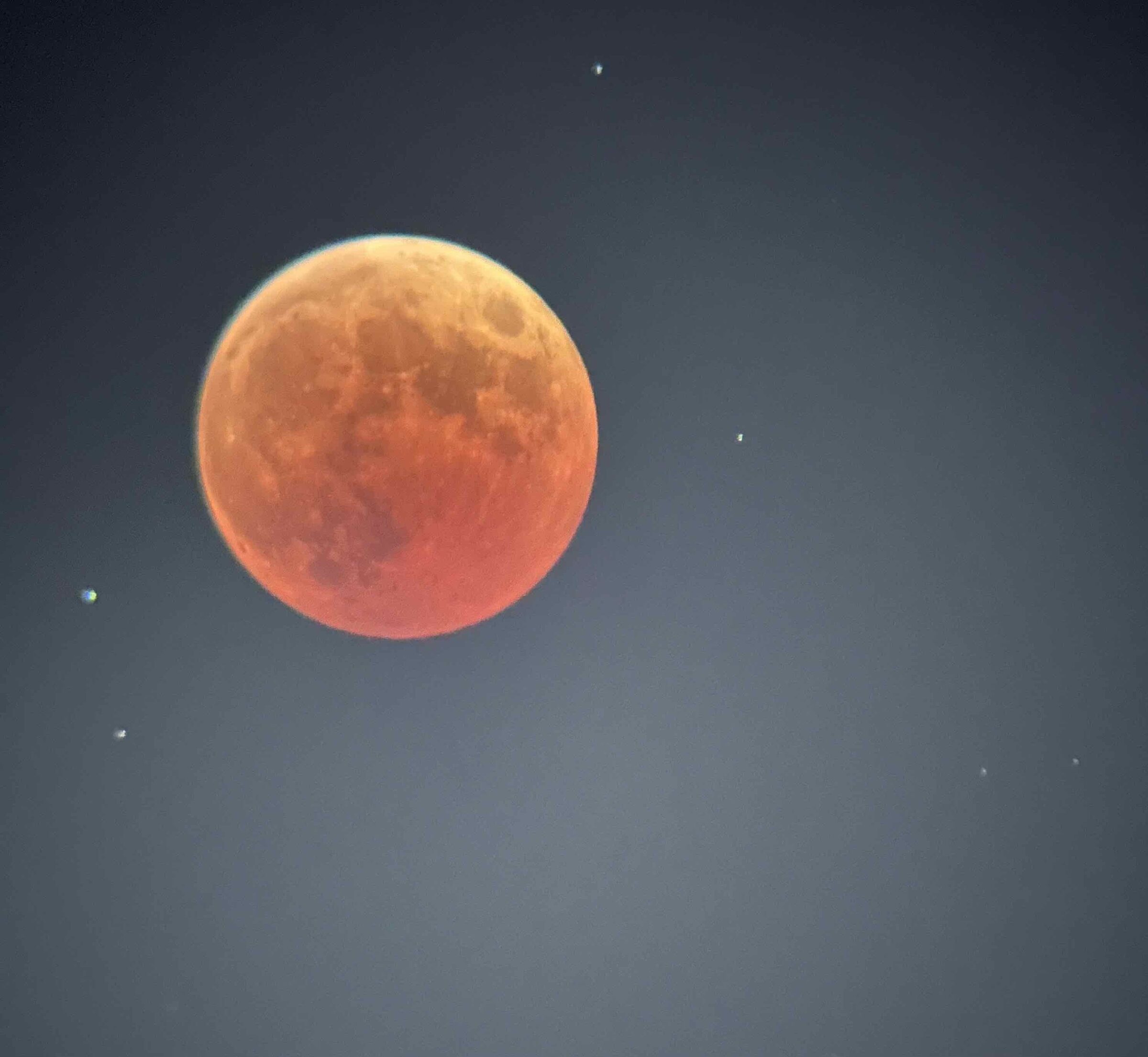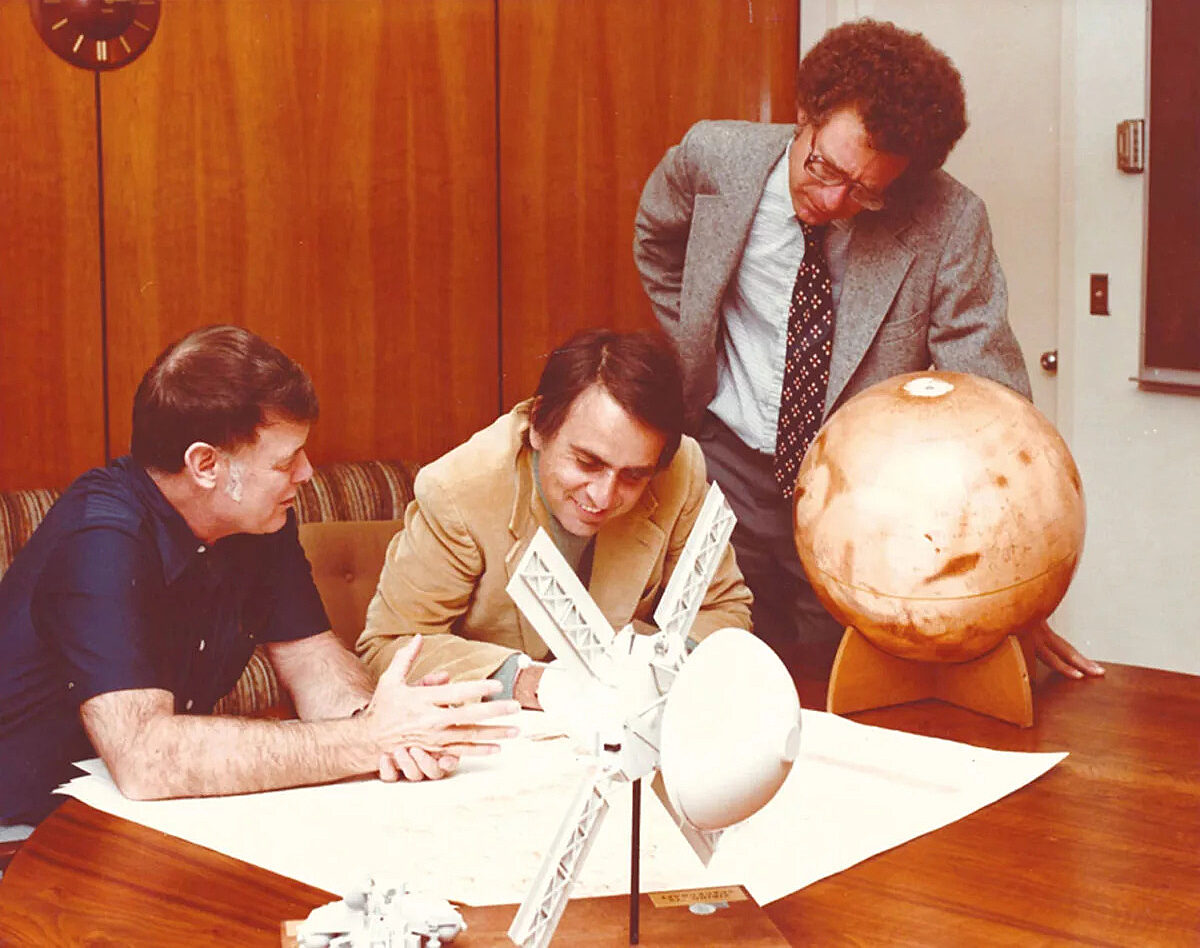The Downlink • Nov 11, 2022
Two pale blue dots
Space Snapshot

Planetary Society member Zong Wang from Shanghai, China, took this photo of this week’s total lunar eclipse using binoculars and an iPhone. Planetary Society co-founder Carl Sagan coined the term “Pale Blue Dot” to describe Earth as seen from a great distance in space; in this image, the pale blue dot visible to the lower left of the Moon (above a smaller dot) is distant Uranus. Image credit: Zong Wang.
You love space, now take action
This weekly newsletter is your toolkit to learn more about space, share information with your friends and family, and take direct action to support exploration. Anyone can subscribe at planetary.org/connect to receive it as a weekly email.
Fact Worth Sharing

Carl Sagan co-founded The Planetary Society because he recognized the importance of space exploration. In his book Cosmos he wrote, “I believe our future depends on how well we know this Cosmos in which we float like a mote of dust in the morning sky.”
Mission Briefings


Psyche mission delays are affecting another NASA mission. The Psyche mission to an asteroid of the same name missed its launch window earlier this year because of delays in developing its flight software, as well as broader institutional issues at NASA’s Jet Propulsion Laboratory. As a result, the VERITAS Venus mission has now also been delayed to 2031 at the earliest. Pictured: An artist’s impression of the spacecraft at the asteroid Psyche. Image credit: NASA et al.

A new set of experiments is flying to the International Space Station. The U.S. National Science Foundation is funding seven new experiments that will be conducted in the microgravity environment of the ISS. The research has potential benefits here on Earth, including treatments for heart disease and osteoporosis, early warning systems for mudflows, and efficiency in power plants.

Another hurricane is delaying the Artemis I launch. Because of Hurricane Nicole, the mission to launch an uncrewed Orion capsule aboard a Space Launch System rocket has been pushed back to a Nov. 16 launch from NASA’s Kennedy Space Center in Florida.
From The Planetary Society


Carl Sagan’s legacy expands far beyond the Solar System. From the Cosmos series and his many books to the Pioneer plaques and Voyager golden records, Sagan changed space exploration and public appreciation for science in ways that will live on forever. In this week’s Planetary Radio, his longtime collaborator and life partner Ann Druyan celebrates what would have been Sagan’s 88th birthday by reflecting on their love story and the work they did together that continues to inspire so many people today. Pictured: The founders of The Planetary Society near the time the organization was formally incorporated. From left to right: Bruce Murray, Carl Sagan, and Lou Friedman. Image credit: The Planetary Society.

Venus is a hot destination, including for a potential Chinese mission. The Venus Volcano Imaging and Climate Explorer (VOICE) is among a few missions competing for funding from the Chinese Academy of Sciences. VOICE would complement the research to be carried out by other upcoming Venus missions led by NASA and ESA, and would study the planet’s atmosphere and surface from orbit.

There’s a lot to celebrate in space this year. Now it’s up to you to choose the highlights. The Planetary Society’s Best of 2022 campaign is on now, where you can vote for your favorite space images, exploration milestones, missions, and more. Cast your vote today and share the campaign with anyone you know who loves space.
What's Up

In the early evening look for Jupiter shining very bright in the east, toward the south for viewers in the northern hemisphere and toward the north for viewers in the southern hemisphere. Saturn shines bright and yellowish farther to the west. Mars rises in the east in the mid-evening, looking bright and reddish. Find out what else to expect in November’s night skies.
Wow of the Week

Even if you’ve seen it before, the iconic Pale Blue Dot image never ceases to amaze. This view of Earth was captured in 1990 by NASA’s Voyager 1 spacecraft from a distance of 6 billion kilometers (3.7 billion miles) as it sped out of the Solar System. Earth appears as a tiny dot within a ray of sunlight scattered by the camera lens. Carl Sagan was instrumental in getting this photo taken, urging NASA to command the spacecraft to turn back to look at Earth despite not having a scientific reason for doing so. He explains in this excerpt from his book Pale Blue Dot why this view is so important. Image credit: NASA/JPL-Caltech.
Send us your artwork!
We love to feature space artwork in the Downlink. If you create any kind of space-related art, we invite you to send it to us by replying to any Downlink email or writing to [email protected]. Please let us know in your email if you’re a Planetary Society member!


 Explore Worlds
Explore Worlds Find Life
Find Life Defend Earth
Defend Earth

